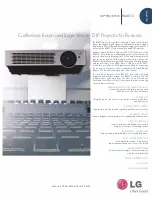
Notes:
(1) Employers may select respirators assigned for use in
higher workplace concentrations of a hazardous substance
for use at lower concentrations of that substance, or when
required respirator use is independent of concentration.
(2) The assigned protection factors in Table 1 are only
effective when the employer implements a continuing,
effective respirator program as required by this section
(29CFR 1910.134), including training, fit testing,
maintenance, and use requirements.
(3) This APF category includes filtering facepieces, and half
masks with elastomeric facepieces.
(4) The employer must have evidence provided by the
respirator manufacturer that testing of these respirators
demonstrates performance at a level of protection of 1,000 or
greater to receive an APF of 1,000. This level of performance
can best be demonstrated by performing a WPF or SWPF
study or equivalent testing. Absent such testing, all other
PAPRs and SARs with helmets/hoods are to be treated as
loose-fitting facepiece respirators, and receive an APF of 25.
(5) These APFs do not apply to respirators used solely for
escape. For escape respirators used in association with
specific substances covered by 29 CFR 1910 subpart Z,
employers must refer to the appropriate substance-specific
standards in that subpart.
Escape respirators for other IDLH atmospheres are specified
by 29 CFR 1910.134 (d)(2)(ii).
70
Notes:
(1) Employers may select respirators assigned for use in
higher workplace concentrations of a hazardous substance
for use at lower concentrations of that substance, or when
required respirator use is independent of concentration.
(2) The assigned protection factors in Table 1 are only
effective when the employer implements a continuing,
effective respirator program as required by this section
(29CFR 1910.134), including training, fit testing,
maintenance, and use requirements.
(3) This APF category includes filtering facepieces, and half
masks with elastomeric facepieces.
(4) The employer must have evidence provided by the
respirator manufacturer that testing of these respirators
demonstrates performance at a level of protection of 1,000 or
greater to receive an APF of 1,000. This level of performance
can best be demonstrated by performing a WPF or SWPF
study or equivalent testing. Absent such testing, all other
PAPRs and SARs with helmets/hoods are to be treated as
loose-fitting facepiece respirators, and receive an APF of 25.
(5) These APFs do not apply to respirators used solely for
escape. For escape respirators used in association with
specific substances covered by 29 CFR 1910 subpart Z,
employers must refer to the appropriate substance-specific
standards in that subpart.
Escape respirators for other IDLH atmospheres are specified
by 29 CFR 1910.134 (d)(2)(ii).
70
Notes:
(1) Employers may select respirators assigned for use in
higher workplace concentrations of a hazardous substance
for use at lower concentrations of that substance, or when
required respirator use is independent of concentration.
(2) The assigned protection factors in Table 1 are only
effective when the employer implements a continuing,
effective respirator program as required by this section
(29CFR 1910.134), including training, fit testing,
maintenance, and use requirements.
(3) This APF category includes filtering facepieces, and half
masks with elastomeric facepieces.
(4) The employer must have evidence provided by the
respirator manufacturer that testing of these respirators
demonstrates performance at a level of protection of 1,000 or
greater to receive an APF of 1,000. This level of performance
can best be demonstrated by performing a WPF or SWPF
study or equivalent testing. Absent such testing, all other
PAPRs and SARs with helmets/hoods are to be treated as
loose-fitting facepiece respirators, and receive an APF of 25.
(5) These APFs do not apply to respirators used solely for
escape. For escape respirators used in association with
specific substances covered by 29 CFR 1910 subpart Z,
employers must refer to the appropriate substance-specific
standards in that subpart.
Escape respirators for other IDLH atmospheres are specified
by 29 CFR 1910.134 (d)(2)(ii).
70
Notes:
(1) Employers may select respirators assigned for use in
higher workplace concentrations of a hazardous substance
for use at lower concentrations of that substance, or when
required respirator use is independent of concentration.
(2) The assigned protection factors in Table 1 are only
effective when the employer implements a continuing,
effective respirator program as required by this section
(29CFR 1910.134), including training, fit testing,
maintenance, and use requirements.
(3) This APF category includes filtering facepieces, and half
masks with elastomeric facepieces.
(4) The employer must have evidence provided by the
respirator manufacturer that testing of these respirators
demonstrates performance at a level of protection of 1,000 or
greater to receive an APF of 1,000. This level of performance
can best be demonstrated by performing a WPF or SWPF
study or equivalent testing. Absent such testing, all other
PAPRs and SARs with helmets/hoods are to be treated as
loose-fitting facepiece respirators, and receive an APF of 25.
(5) These APFs do not apply to respirators used solely for
escape. For escape respirators used in association with
specific substances covered by 29 CFR 1910 subpart Z,
employers must refer to the appropriate substance-specific
standards in that subpart.
Escape respirators for other IDLH atmospheres are specified
by 29 CFR 1910.134 (d)(2)(ii).
70
















































